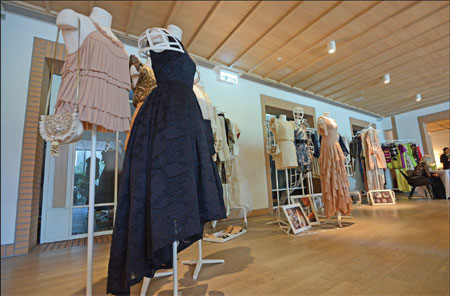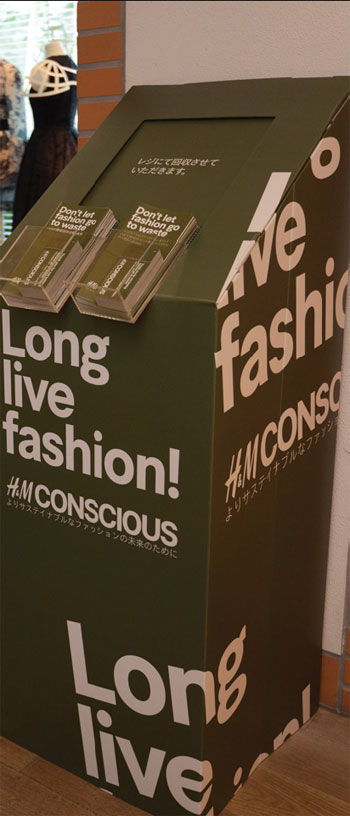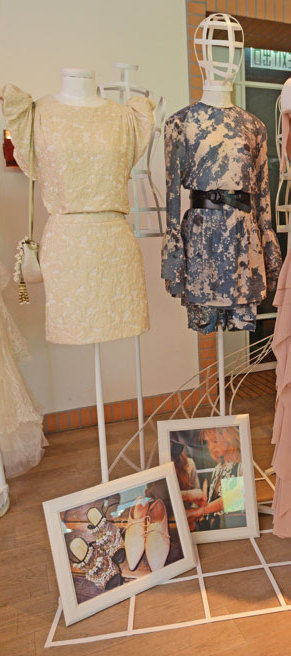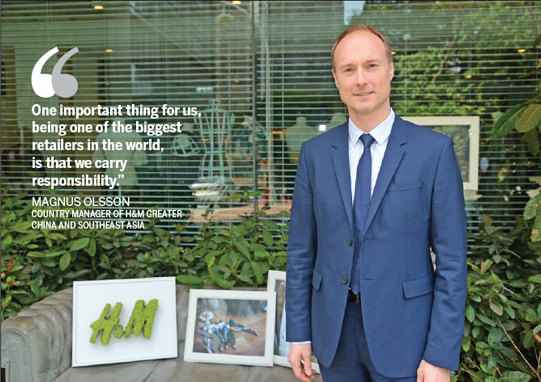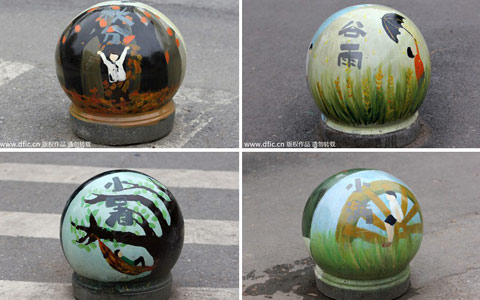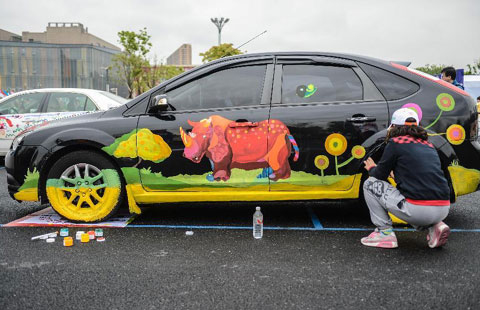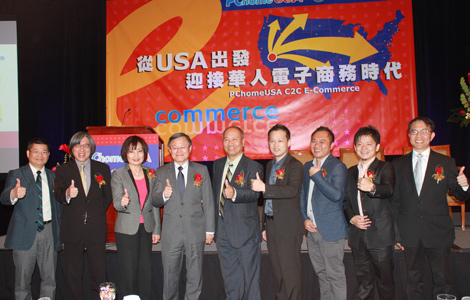Fast fashion gets sustainable
Updated: 2014-05-05 08:16
By Gan Tian (China Daily)
|
||||||||
The throwaway fashion industry is often criticized for causing environmental damage, but retailer H&M is looking at ways to improve its green footprint. Gan Tian reports.
Fashion observers frequently criticize fast fashion for not being eco-friendly. However, one of the world's best-known high street brands, H&M, is committed to going green.
The company introduced its Conscious and its Conscious Exclusive collections to Chinese customers on April 10.
As the names suggest, these two collections are trying to raise the public's consciousness on environmental protection in the fashion industry.
The term "fast fashion" was first used by retailers to describe designs that move quickly from catwalk to stores.
Produced in large quantity, they are comparatively cheaper, yet still stylish. For consumers, it is a good thing: They can buy many items at good prices and can discard those garments and buy new products when the trends move on. The cheap and disposable nature of the clothes has also lead to the term "McDonalds fashion".
Fast fashion has come under criticism, with people blaming it for pollution, poor craftsmanship and its focus on short trends instead of classic styles.
Conscious and Conscious Exclusive collections, however, are breaking the stereotype of fast fashion. Garments from these collections are not only stylish, but also eco-friendly. Materials used are organic cotton, recycled cotton, recycled polyester, hemp and Tencel, a biodegradable fabric made of wood-pulp cellulose.
Conscious collection, which focuses on daily wear, features wide-cut pants in fluid fabrics and harem-style pants that are fitted through the leg with a tassel decoration at the waist. Bright colors can also be found, including a bright orange draped dress, a soft loose jacket in the shape of a kimono. zebra-print and hand-drawn animal prints are also highlights.
Another interesting aspect of this collection is some of the garments are made from recycled clothes.
H&M fan Wang Chuyang found that she could enjoy a discount at one of its stores in Shanghai, if she brought in some unwanted garments. She traded some sheets and old jackets for a discount on two brand-new skirts.
The old garments Wang took to the H&M boutique might reappear in H&M's Conscious collection. This season, a denim jacket and a pair of skinny jeans are made of recycled garments from customers.
Conscious Exclusive collection has more up-market, red-carpet looks. Materials used in this collection include recycled plastic beads, organic mulberry silk and organic leather. Even accessories are also very nature friendly: Exaggerated rose hair clips and a clean-cut bag are both made with organic leather.
The designers of the Conscious Exclusive collection are from Ever Manifesto, a UK-based think tank for sustainable fashion and design.
"It's great to partner with a brand like H&M that's already aiming to lead the industry in making sustainable fashion mainstream, especially with such an elaborate and innovative collection. It's also a really exciting experience to support H&M's Conscious teams and implement and inspire positive change," says Elizabeth von Guttmann of Ever Manifesto.
US model and actress Amber Valletta is the face of the new collection's advertising campaign. Valletta is known for her interest in sustainability.
"This collection shows that you can be mindful about people and the environment and fashion-conscious at the same time. I simply love the designs, and the fact that all the pieces are made from organic, recycled and cellulose fabrics shows that fashion and sustainability are no longer about compromise," Valletta says.
"One important thing for us, being one of the biggest retailers in the world, is that we carry responsibility," says Magnus Olsson, country manager of H&M Greater China and Southeast Asia.
The Conscious and Conscious Exclusive collections were first launched early in 2010 and received a good response from consumers, according to Olsson.
He stresses that H&M has made many efforts to create eco-friendly fashion. Among all the fast fashion companies, H&M is the biggest buyer of organic cotton.
"By 2020, we are aiming to use more eco-friendly materials in our collections," Olsson says.
Contact the writer at gantian@chinadaily.com.cn.
AT A GLANCE
Fashion designers and companies are trying hard to be more environmentally friendly, and fashion consumers can also do their bit. Here are some tips from Magnus Olsson, country manager of H&M Greater China, Singapore and Malaysia, and Tao Xiaoma, president of Icicle.
·Buy garments made from natural materials. At least safe materials.
·Don't buy garments with very bright colors. The dyeing process is usually damaging to the environment.
·Try to purchase classic garments that can last for long time.
·Recycle your clothes.
·Wash less frequently if possible.
|
H&M's Conscious and Conscious Exclusive collections demonstrate the retailer's devotion to lead the industry in making sustainable fashion mainstream. |
|
Photos provided to China Daily |
|
Conscious Exclusive collection has more up-market looks. |
|
H&M has made many efforts to create eco-friendly fashion, according to Magnus Olsson, the company's country manager for Greater China and Southeast Asia. |
(China Daily USA 05/05/2014 page9)

 Obama roasts himself, rivals at dinner
Obama roasts himself, rivals at dinner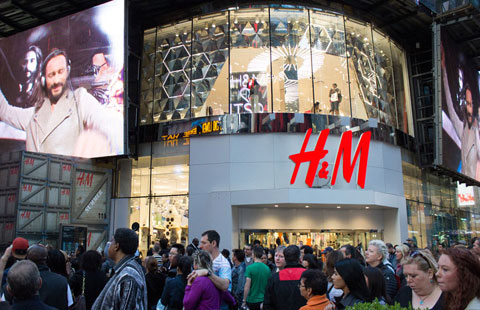
 H&M promotes summer collections with DJ show in NYC
H&M promotes summer collections with DJ show in NYC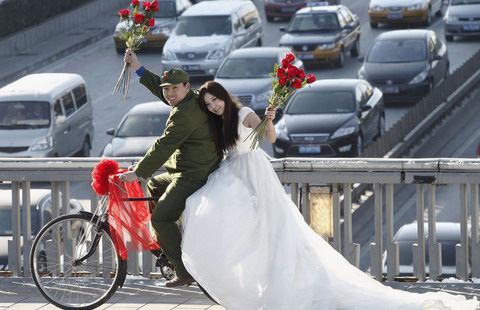
 Forum trends: No house, no marriage?
Forum trends: No house, no marriage?
 One handed climber scales UK's toughest routes
One handed climber scales UK's toughest routes
 World leaders when they were younger
World leaders when they were younger
 Huge mist cannons attract people in Lanzhou
Huge mist cannons attract people in Lanzhou
 Indian train derailment kills at least 12
Indian train derailment kills at least 12
 H&M promotes summer collections with DJ show
H&M promotes summer collections with DJ show
Most Viewed
Editor's Picks
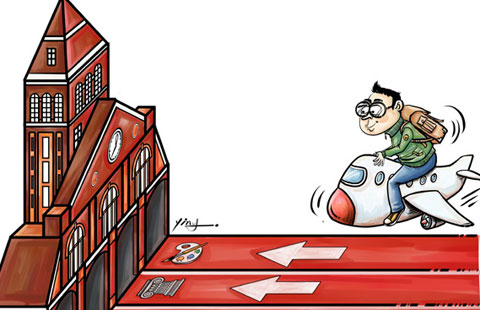
|

|

|
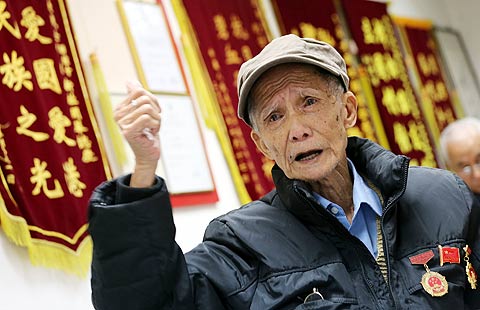
|
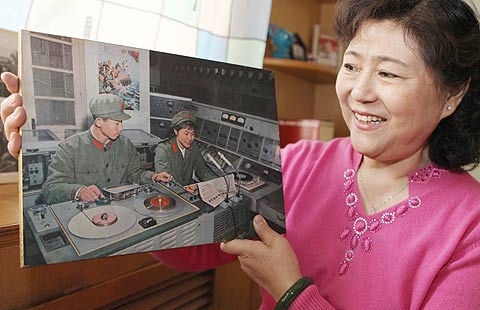
|
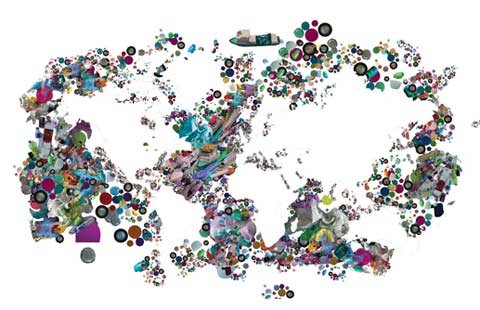
|
Today's Top News
Travel passes to DPRK made easier
Yunnan's only panda perking up thanks to TV
Intl cooperation to aid drug fight
Deal signed to upgrade roads, grid in Ethiopia
China busts foreign spy ring
Tokyo lawmakers begin China visit
Houston tries shuttlecock diplomacy
Senior Chongqing official investigated
US Weekly

|

|
